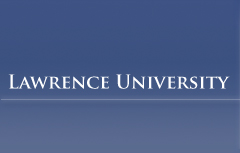Document Type
Honors Project
Publication Date
Spring 6-6-2014
Abstract
Abstract. Current research shows a worldwide shift in the population dynamics of reefs attributed to increasing human disturbance. With increasing nutrient additions, competitive populations of turf and macroalgae bloom and dominate coral reefs leading to decreased health of the reef as a whole. Unfortunately, few studies have been done showing the long-term changes in algae composition on reefs. In order to find the significant factors in the long-term composition of algae on reefs, algae and fish abundance data were collected through the Lawrence University Marine Program and analyzed for this study. Algae were split into three functional groups: encrusting, turf and macroalgae, and relative abundance for each was compared for significance against fish and level of natural disturbance at a site. This study found that the level of natural disturbance was likely an important factor in long-term algal abundance with the highly protected sites hosting high levels of macroalgae and less protected sites hosting high levels of turf algae. Two herbivores, blue tangs (Acanthurus coeruleus) and stoplight parrotfish (Sparisoma viride) were also found to significantly control turf algae. Future studies on fishing pressures in the region could more fully assess the long-term effects of herbivores on reef algae composition.
Level of Honors
cum laude
Department
Biology
Advisor
Bart De Stasio
Recommended Citation
Doughty, Patrick J., "Factors in Long-Term Algal Composition of Cayman Reefs: Determining Effects of Natural Disturbance and Grazer Pressures" (2014). Lawrence University Honors Projects. 56.
https://lux.lawrence.edu/luhp/56
Included in
Aquaculture and Fisheries Commons, Marine Biology Commons, Other Ecology and Evolutionary Biology Commons

Comments
Advisor: Bart DeStasio
Level of Honors: cum laude